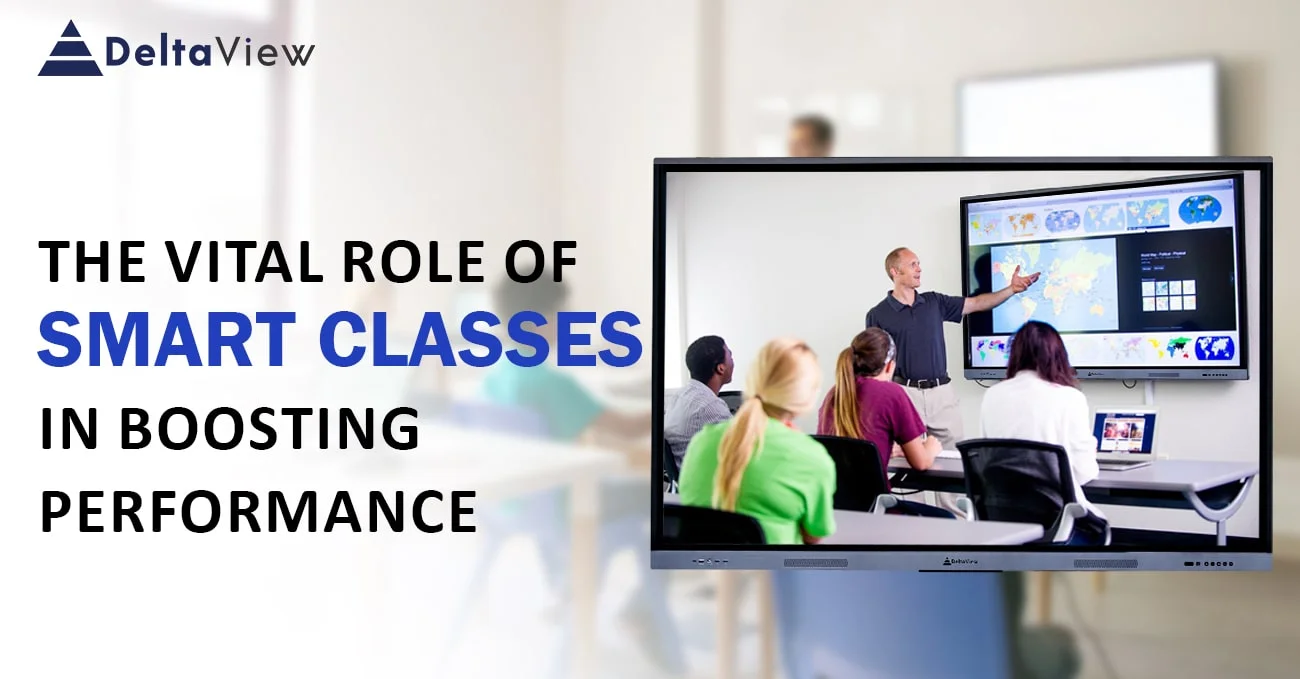The Vital Role of Smart Classes in Boosting Performance
April 23, 2024
Smart classes have revolutionized the traditional educational landscape, offering an innovative approach to teaching and learning. By integrating technology in classrooms, students and teachers alike are experiencing a paradigm shift in the educational process.
The days when education was limited to textbooks and classroom walls are over. A smart classroom leverages digital technology to create an interactive and dynamic learning environment where students can actively participate and engage with the subject.
Benefits of Smart Classes
Enhanced Learning Experience
They provide a multisensory learning experience catering to different learning styles. Through visual aids, audio clips, and interactive simulations, students can grasp complex concepts with greater ease and retention.
Interactive Teaching Methods
Teachers can employ interactive teaching methods like quizzes, polls, and virtual experiments to make learning more engaging and participatory. This fosters a collaborative learning environment where students actively contribute to discussions and problem-solving activities.
Accessibility and Inclusivity
It also bridges the gap between traditional and modern education by catering to diverse learners, including those with special needs. With features like screen readers, captioning, and adjustable font sizes, educational content becomes accessible to all students, ensuring inclusivity in the classroom.
Integration of Technology in Education
Digital Content and Resources
Smart class board leverage digital content and resources to enrich the learning experience. From e-books and online tutorials to educational apps and simulations, students can access many resources that complement traditional teaching methods and cater to individual learning preferences.
Real-time Assessment and Feedback
Technology enables real-time assessment and feedback, allowing teachers to monitor student progress and provide timely interventions. Through online quizzes, interactive assignments, and automated grading systems, educators can personalize learning experiences and effectively address learning gaps.
Smart Classrooms vs. Traditional Classrooms
Engagement Levels
Smart boards facilitate higher levels of student engagement in classrooms than traditional classrooms. The interactive nature of digital content and multimedia resources captures students’ attention and encourages active participation in the learning process.
Retention of Information
Studies have shown that students retain information better in these classes due to the multisensory nature of learning. Visual and auditory stimuli enhance memory retention, leading to deeper comprehension and long-term recall of concepts.
Adaptability to Different Learning Styles
They accommodate different learning styles, allowing students to learn at their own pace and in their preferred mode of instruction. Whether visual, auditory, or kinesthetic learners, all students can benefit from personalized learning experiences tailored to their needs.
Future Prospects of Smart Classes
The future of education lies in the continued evolution and expansion of smart classes worldwide. As technology advances, these classes, with our DeltaView Spark, will become more accessible, affordable, and integrated into mainstream education systems, empowering students and teachers to reach their full potential. Smart classes also play a vital role in boosting performance by revolutionizing the traditional educational paradigm. They cater to diverse learners through interactive teaching methods, digital content, and personalized learning experiences and enhance student engagement, retention, and academic achievement.